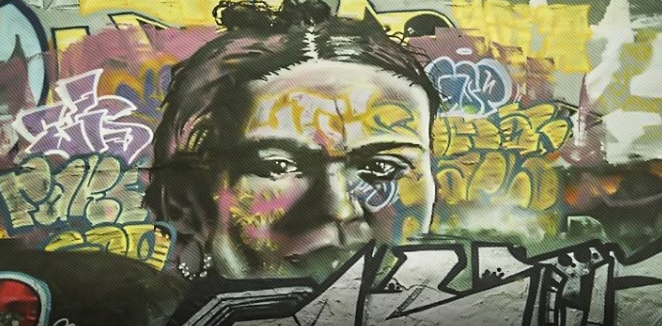CEO and founder András Kristof believes as people become more educated about NFTs, the focus will be on utilities.
The inventor of Tembusu Terminals (first Bitcoin ATMs) in Singapore says he’s spent the last two years building a post-hype utility NFT platform. Although, founder András Kristof is gratified to see people almost unknowingly engaging with digital collectibles worldwide amidst the ‘NFT winter’ of late.
With news emerging from PayPal’s own NFT purchase and transfers to artist Harry Styles’ fans downloading wallets for future digital collectible rewards, for those curious and open-minded enough to look beneath the surface of the “NFTs are dead” generalisation prevalent today, there are signs of life amidst the rubble.
Companies such as Pudgy Penguins also continue to expand into physical toys within the US through Walmart, while Doodles have recently collaborated with footwear brand Crocs to merge physical and digital worlds. These significant developments shed light on members within the NFT industry ‘picking through the wreckage’, treating the collapse as something of a cleansing event.
“I’m a strong believer that we don’t need hype,” says András who’s Galaxis has deployed utility based collectibles for celebrities in the past. Since András started building Galaxis back in 2020 (formerly known as Ether Cards), the platform allows creators to monetise their work or engage with their audience using NFTs – the range of utilities and traits that collections such as Val Kilmer, Mike Tyson and others have used since then. Galaxis had a sense that it was an ‘important idea’, with the intention of creating a platform that can continue to evolve beyond the copycat, scam or fast money NFT craze.
Over the course of 2021, beginning earnestly with the landmark Beeple sale, the NFT market was sky high, with around $1 billion a week – with average prices of NFTs above $3,000, despite the turbulent market. Like most other economic bubbles that eventually burst, the NFT bubble has done so in spectacular fashion with an NFT collapse of 95 percent. Although what triggered the crash is unclear, the fall in demand – catalysed by a slump in the cryptocurrency market has wiped out billions of the combined value of all NFTs in circulation.
Kristof says the new breed of use cases is surfacing that take advantage of the particular properties of NFTs (such as Chainlink’s CCIP that allows people to move NFTs cross-chain), which is one of the core factors at Galaxis.
Among the host of utilities that these digital collectibles promise to provide, the gaming sector has continued to be battle-tested, with some games attracting thousands of users each day. A spokesperson at Galaxis revealed their efforts to ‘engage’ their community using games, announcing a battle royale style competition with three Crypto Punk NFTs up for grabs. [1] [2]
The price of these crypto punks is estimated to be around $210,000, with the competition set to begin later this year. All you need to do is own an Ether card with a Punk battle ticket trait to participate!
András suggests the increase in NFTs being used as membership cards, which is the foundation that Galaxis is built on. Companies like Starbucks have launched NFTs as an extension to their loyalty program, while András’ Galaxis has helped artists like Steve Aoki to use NFTs to give fans special access to events and merchandise.
Galaxis believes that the main point of differentiation for all of this, as opposed to what’s already out there, is the tradability factor.
Membership cards on the blockchain in the form of NFTs can be traded, so in a scenario a person earns let’s say a lifetime of free pizzas due to their loyalty to a brand, they can choose to convert their efforts into cash because it’s an NFT that can be traded.
The same can extend to concerts, music festivals, retail brands, sporting events and much more – the possibilities are limitless, says András, who predicts NFTs to be the ‘future of commerce’. He believes anyone with a community can utilise these NFTs to create and deliver or be a part of experiences, digital or physical – which seems like tangible benefit rather than just ownership. Although to some this might sound deranged, the world has already experienced hundreds of examples including the billions of annual revenue from games such as Fortnite.
It’s the foundation of community-building, or community engagement, so a lot of creators are being drawn to the NFT industry for its monetisation and engagement opportunities.
“It’s bigger than just money” says Zoltan Boros and Gabor Szikszai; the artists involved with Galaxis’ own NFT collections. The duo is famous for their widely acclaimed illustrations and contributions to brands such as Dungeons and Dragons, Star Wars, World of Warcraft, Hearthstone and more over the last 25 years. “It is about the connections you develop with someone you’ve been following for a long time,” they added.
The top brands, auction houses and more continue to produce off-springs of NFT technologies even with the supposed NFT winter, indicating more signs of life as one keeps looking.
“Any innovation with significant financial, cultural and social impact will attract questioning during its downturns, and with those doubts and limitations arise something better,” said Boros and Szikszai.
András Kristof, CEO and Founder of the post hype NFT utility platform Galaxis claims that NFTs aren’t ‘dead’, they’re only just evolving.
Although with uncertainty in regulatory clarities over the topic of NFTs and digital collectibles, it remains to be seen if the use cases of NFTs will continue to be ‘game-changers’ as they are dressed up to be, with startups like the now Switzerland based Galaxis continuing to contribute to the success of many utility collectibles.

